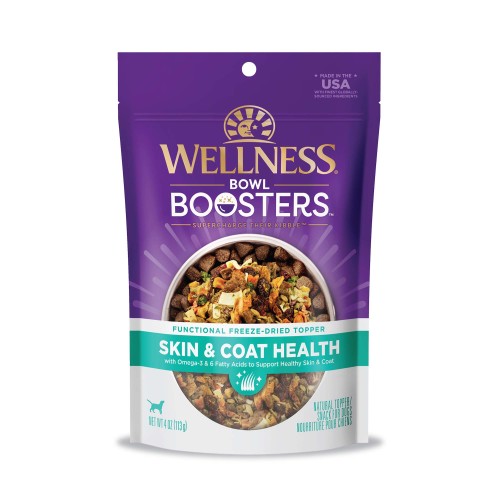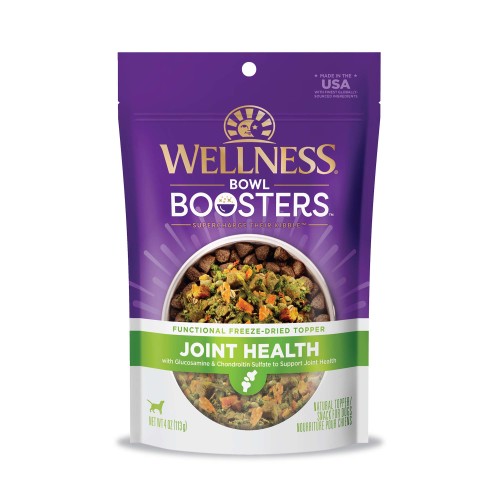September 21, 2022
What to Look For in a Dog Treat for Training
If you’re training a new puppy with simple commands like “sit,” “stay,” “lie down,” or are working on house training them, a dog treat for training can be a useful tool in this process. Want to work on behavior modification with an older dog? Need to teach an older dog new tricks? (Yes! It can be done.) Delicious dog training treats can help them stay engaged and motivated during the training process.
When you’re pondering what to look for in a dog treat for training, some questions are probably going through your head. How big should the dog training treat be? What ingredients should I look for in a training treat? How often can I give my dog a training treat? Here, we’re tackling common dog training treat FAQs with Dr. Danielle Bernal, our resident veterinarian at Wellness Pet Company.
Dog Training Treat FAQs
Common questions you might have about dog training treat ingredients and amounts.
What should you look for in a dog training treat?
You want a treat that will be a “high-value” factor for the dog and cause him or her to have enthusiasm about the treat. “Typically we’ve noticed that dogs are more motivated with a training treat that has a higher meat content and a softer texture reward,” says Dr. Danielle. Having different textures and flavors of training treats can drive overall enthusiasm for the dog. That’s because different flavors will all smell different and support treating enthusiasm. Keep ‘em guessing about whether the next treat they’re going to try to catch in their mouths is a chicken, vegetable, or liver flavor!
We recommend Wellness Old Mother Hubbard’s Training Bitz when you’re trying to teach your dog new behaviors, training them to do something, or teaching them new tricks. Why are these great dog treats for training? Because they are a small size, just 2 calories, and great for a dog’s teeth, says Dr. Danielle.
How many dog training treats can you give each day?
“This depends on the treat you give, the dog you have, their health needs, and total exercise your dog gets daily,” says Dr. Danielle. The rule of thumb here is that treats should be no more than 10% of total daily calories. If you aren’t sure of the number of calories your dog should have each day, check with your veterinarian. Is your dog a little overweight? Incorporate toy rewards into training to mix things up and keep them engaged.
How many calories should be in a dog training treat?
“Over-treating is one of the top ways to contribute to a pet’s weight gain,” she says. Make sure your dog is getting his or her nutrition from their main foods first before getting treats. Also, keep your dog’s size in mind when you’re giving treats. Giving too many dog treats for training adds up faster in a small dog’s diet than a bigger dog’s calorie intake.
Look at the calories and fat per serving before purchasing a dog training treat, suggests Dr. Danielle. What’s even more important than those macronutrients is how many treats you’re giving your pet. That’s often because our dogs know exactly the look to give us to get a treat. Or, we want to show them that we love them with something special to eat.
What ingredients should be on the label of a good training treat for dogs?
For a superior natural treat, pet parent should look for high quality ingredients they recognize such as fresh chicken and eggs, wholesome carbohydrates, and delicious flavors such as cheese, bacon and peanut butter. Crafted with wholesome natural ingredients that are as nutritious as they are delicious, Wellness Old Mother Hubbard baked treats avoid all added artificial colors, flavors and preservatives for that perfect home-style recipe carefully crafted just like you’d find in your own kitchen.





